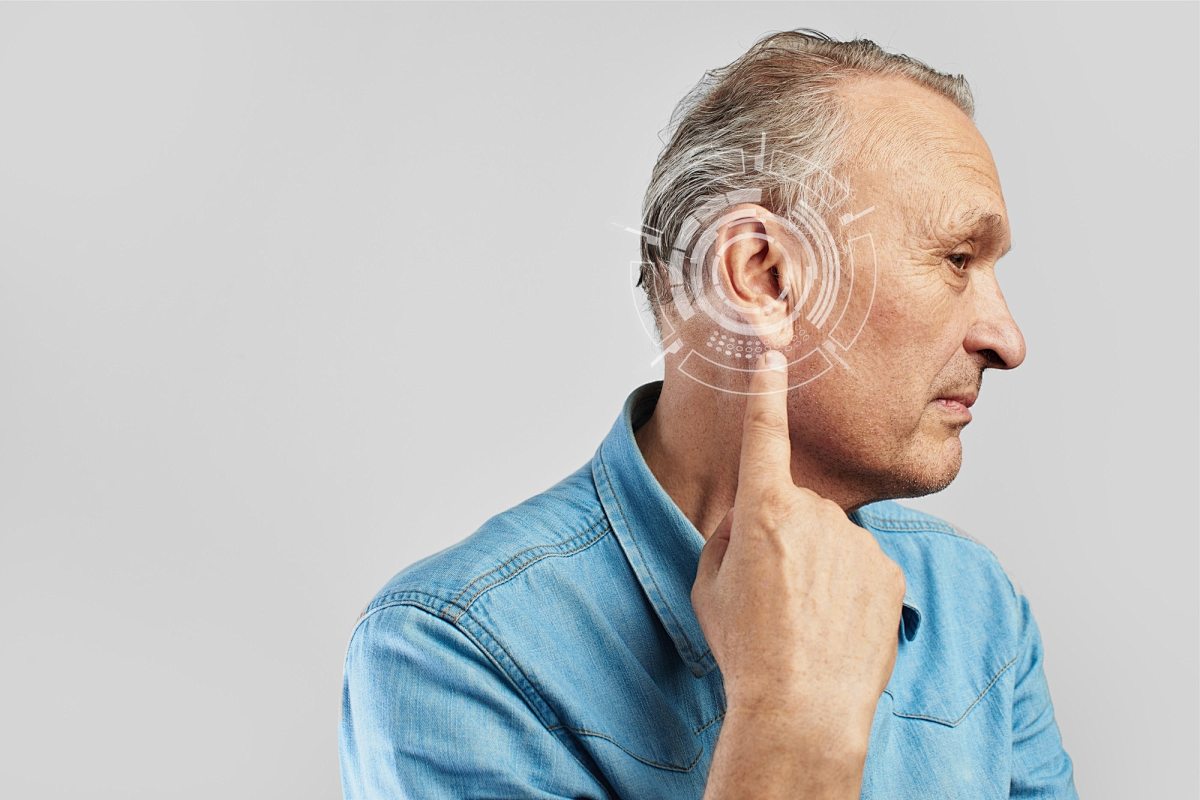I. Introduction
Hearing loss is a common health problem among the elderly, which not only affects hearing function but also has a profound impact on the psychological and social lives of patients. The International Classification of Functioning, Disability and Health framework proposed by the World Health Organization points out that adult hearing rehabilitation should cover multiple goals such as integrating into society and improving the quality of life. However, many patients have psychological disorders due to hearing loss and may even be isolated from society. Self-esteem plays a crucial role in improving the quality of life. People with high self-esteem are better able to cope with life challenges, and it is expected that after fitting hearing aids, hearing-impaired patients can improve their self-esteem by improving their hearing and face life actively. This study aimed to deeply explore the related changes and influencing factors of elderly hearing-impaired patients after wearing hearing aids.
II. Research Subjects and Methods
(I) Research Subjects
- Recruitment and Screening
- 107 subjects aged 50 – 80 years were recruited through social media. After communicating the experimental protocol by telephone, preliminary screening was carried out. The inclusion criteria included good self-care ability, good health, specific hearing loss characteristics (bilateral symmetrical sensorineural hearing loss, type A tympanogram, hearing threshold range, normal tympanic membrane, no relevant medical history and disorders, low speech recognition rate before wearing hearing aids).
- The subjects were divided into a mild to moderate group (n = 38) and a severe group (n = 69) based on the average hearing threshold of 60 dB HL. There was no significant difference in the gender ratio between the two groups, and there was no difference in age, speech recognition rate before wearing hearing aids, and self-esteem before and after wearing hearing aids, but there were significant differences in the hearing thresholds of the left and right ears and the speech recognition rate after wearing hearing aids.
(II) Research Tools
- Pure Tone Audiometry and Acoustic Impedance Testing
- The AudioStrar Pro audiometer and Titan middle ear analyzer that meet the standards were used to complete the test in a standard soundproof room, testing the air and bone conduction hearing thresholds and acoustic impedance related indicators, and the tympanogram followed a specific classification standard.
- Hearing Aid Threshold Testing
- The GSI61 audiometer and its supporting speakers were used in a standard soundproof room. The position of the speaker and the test signal were standardized, and the hearing aid thresholds at different frequencies were tested.
- Speech Recognition Rate Test in Quiet Conditions
- With the help of the GSI61 audiometer and sound field, the sentences in the “Love Flying High” speech audiometry software were output, and the subjects were tested at a specific position. The speech test sound intensity was 15 dB above the threshold, and different sentence tables were used before and after the experiment to objectively evaluate the change in the soft voice speech recognition rate.
- Self-Esteem Scale (SES)
- It contains 10 items, with a 4-point scoring system, combining positive and reverse scoring items, and the total score reflects the degree of self-esteem.
- Hearing Aid Wearing Willingness Assessment
- The questions in the previous questionnaire were adopted, covering the sensory aspects (appearance, ease of operation, clarity, and sound quality), perceptual aspects (embarrassing, disgusting, able to promote getting along with others, irritable, able to make life easier), price evaluation, and concerns about wearing hearing aids of each type of hearing aid. The content of the questionnaire was selected based on the relevant influencing factors.
(III) Experimental Procedure
- The subjects first completed the self-esteem scale questionnaire in the unaided state.
- The audiologist adjusted the hearing aid according to the hearing test and subjective feelings.
- After the patient felt comfortable with the adjustment, the hearing aid threshold and speech recognition rate tests were carried out and the hearing aid evaluation was completed.
- The subjects imagined the scene of regular use in the future and then completed the self-esteem scale again to evaluate the impact of the hearing aid on self-esteem.
(IV) Statistical Methods
SPSS 25.0 was used for data analysis. The measurement data were described in the form of mean ± standard deviation. The two-factor repeated measures analysis of variance and multiple linear regression analysis were used to analyze the relevant factors. The two-sided test was used, and α = 0.05 was the standard for statistically significant differences.
III. Results and Analysis
(I) Hearing Changes after Wearing Hearing Aids
After wearing the hearing aid, the hearing thresholds of both ears of the subjects were significantly improved (left ear: F = 141.74, P < 0.01, ηp² = 0.60; right ear: F = 210.39, P < 0.01, ηp² = 0.68). The speech recognition rate before wearing the hearing aid was 38%, and it reached 86% after wearing the hearing aid, indicating that the hearing aid effectively improved the patient’s listening and speech recognition ability.
(II) Changes in Self-Esteem Scale Scores before and after the Immediate Experience of the Hearing Aid
- The self-esteem of the mild to moderate test group was not significantly changed by the fitting of the hearing aid (F = 1.14, P = 0.34, ηp² = 0.03).
- The total self-esteem score of the severe group was significantly reduced before and after wearing the hearing aid (F = 4.34, P = 0.04, ηf² = 0.06), and the degree of change depended on the items of the scale (interaction effect: F = 1.99, P = 0.03, ηp² = 0.03). For example, the scores of items 1, 3, and 7 decreased, reflecting that the performance and comfort of the hearing aid affected the patient’s perception of their own value, and the score of item 8 increased, indicating its role in improving social ability and confidence.
(III) Factors Affecting the Evaluation and Wearing Willingness of the Hearing Aid
- In the mild to moderate hearing loss group, the unaided average hearing threshold had a significant impact on the wearing willingness. The more severe the hearing loss, the stronger the wearing willingness.
- In the severe hearing loss group, the self-esteem score after wearing the hearing aid had a significant impact. The higher the self-esteem, the lower the wearing willingness.
IV. Discussion
(I) Comparison with Existing Studies and the Relationship between the Degree of Hearing Loss and Wearing Willingness
- Compared with the results of Yin Yan et al.’s study, in this study, the unaided average hearing threshold of the mild to moderate hearing loss group affected the wearing willingness, and the self-esteem score after wearing the hearing aid of the severe group had a significant impact, which was not completely consistent with the previous trend of the fitting success rate of hearing aids changing with the degree of hearing loss.
- From the analysis of the factors related to hearing loss and wearing willingness, although patients with mild to moderate hearing loss have relatively strong self-esteem, the actual hearing problems prompt them to may choose to wear hearing aids; patients with severe hearing loss, because the hearing has a great impact on daily life and social activities and their self-esteem is relatively weak, are more likely to accept and adapt to hearing aids, and their wearing willingness is relatively high. Therefore, the fitting of hearing aids needs to comprehensively consider the degree of hearing loss and the psychological status of patients, especially the change of self-esteem.
(II) The Impact of Hearing Aids on Self-Esteem and Psychological Changes
- Hearing loss affects communication and social life and reduces self-esteem, which is consistent with previous studies. This study found that the impact of hearing aids on self-esteem is related to the degree of hearing loss. The self-esteem of the elderly with mild to moderate hearing loss did not change significantly, while that of the severe group changed significantly, and the changes in the scale items reflected the importance of hearing aids in terms of functionality, comfort, and social influence on self-esteem.
- The decrease in the scores of items 1, 3, and 7 reflects the patient’s concerns about their own image and social confidence, which may offset the benefits of hearing aids. The increase in the score of item 8 shows that although the patient has concerns in social aspects, they also recognize the importance of hearing aids for their daily life, which reflects the complex psychological changes of hearing-impaired patients during the process of hearing improvement. Patients need to pay attention to the technical performance, psychological needs, and social environment of hearing aids, and these factors may affect self-esteem.
(III) Factors Related to the Effect of Hearing Aid Fitting
- The hearing aid threshold is an important content for evaluating the effect of the hearing aid and the basis for the rehabilitation of other abilities. Speech audiometry can reflect the level of speech information obtained by the patient after wearing the hearing aid. Sentence tests are more in line with the actual situation of communication and can be used for later evaluation.
- In this study, the hearing-related indicators before and after wearing the hearing aid were significantly improved. The speech recognition rate of the soft voice before wearing the hearing aid was low, and it increased nearly doubled after wearing the hearing aid, indicating that the hearing aid can effectively improve the listening and speech recognition ability of elderly hearing-impaired patients, and the fitting effect, average hearing threshold after wearing the hearing aid, and speech recognition rate before wearing the hearing aid are significant factors affecting the wearing effect.
V. Research Limitations and Future Prospects
(I) Limitations
- This study is an immediate experience study and cannot determine the long-term impact of wearing hearing aids on self-esteem and wearing willingness.
- The research sample comes from a specific area and may have regional limitations and cannot represent all elderly hearing-impaired people.
(II) Future Prospects
- Future studies can conduct long-term follow-up investigations to deeply understand the long-term impact of wearing hearing aids on patients and provide a more comprehensive basis for clinical practice.
- Expand the scope of the research sample to cover elderly hearing-impaired patients from different regions and backgrounds to improve the universality and representativeness of the research results.
VI. Conclusion
This study shows that elderly patients with hearing impairment can significantly improve their hearing and speech recognition ability through professional hearing aid fitting. The impact of hearing aids on the self-esteem of patients with different degrees of hearing loss is different, and the degree of hearing loss, self-esteem, and wearing willingness of hearing aids are closely related. In the process of hearing aid fitting, full attention should be paid to the psychological status of patients, especially the change of self-esteem, in order to achieve comprehensive and effective hearing rehabilitation, improve the quality of life of patients, and help them better integrate into society. Future research needs to be further improved and expanded to provide better hearing rehabilitation services for elderly hearing-impaired patients.




